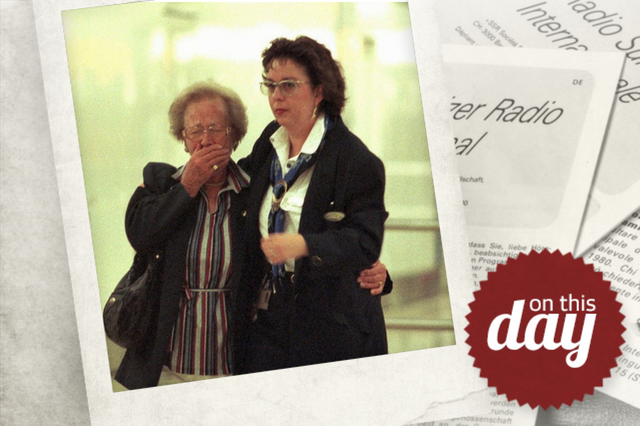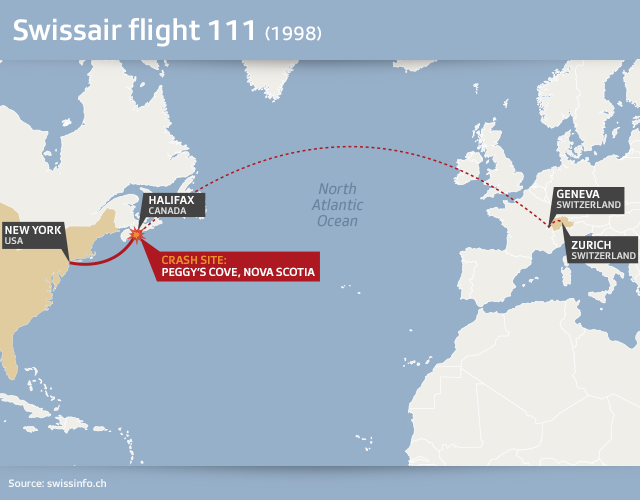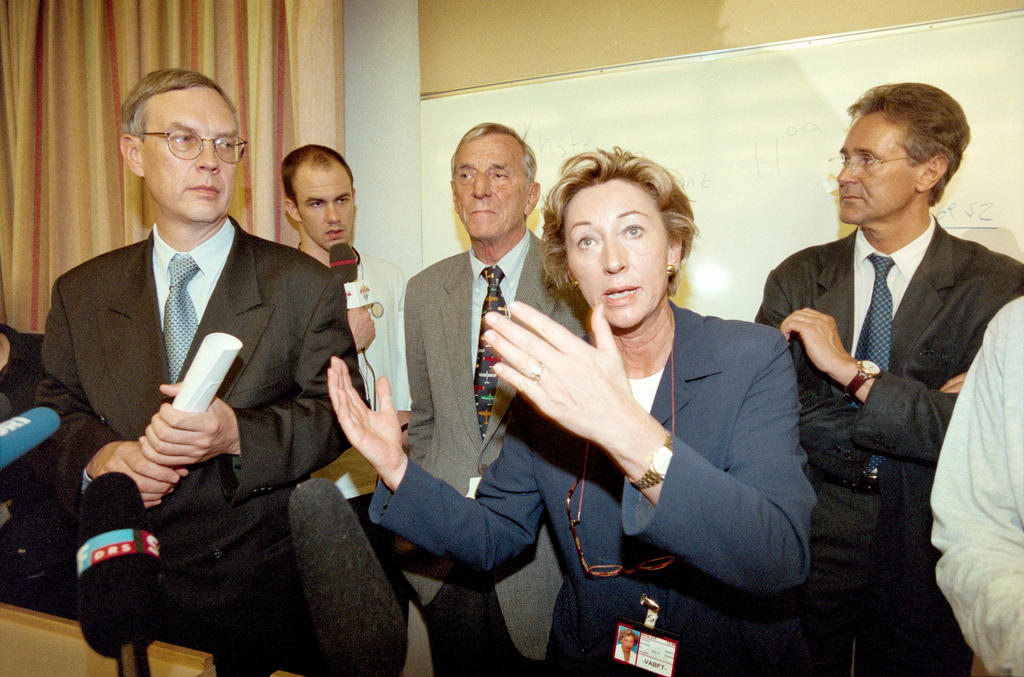
The Swissair flight 111 crash: causes and consequences

On September 2, 1998, 229 people died when Swissair flight 111 crashed into the Atlantic off Nova Scotia. swissinfo.ch looks back at the worst accident in Swiss civil aviation history and the consequences both for airline safety and for Swissair.
Two million pieces of debris; 275 kilometres (171 miles) of electrical wiring; 229 victims from 44 countries. The statistics are still shocking. This clip from Swiss television the following day shows an understandably emotional Philippe Bruggisser, the former head of Swissair’s parent company SAirGroup, updating the media:
The MD-11 aircraft took off from New York at 8:18pm local time, heading for Geneva. Just under an hour later, the pilot and co-pilot detected smoke in the cockpit coming through the air-conditioning system. They requested permission to land and were redirected to the airport at Halifax in the Canadian province of Nova Scotia, just over 100 kilometres away.
Not realising the gravity of the situation, the pilots took a detour to dump some fuel to reduce their weight for landing, but gradually the plane’s instruments – including autopilot, flight data recorder and cockpit voice recorder – failed, and flying the plane manually became impossible as smoke filled the cockpit. Communication with Halifax ended six minutes before impact with the Atlantic, around eight kilometres from Peggy’s Cove.

A search-and-rescue operation was launched immediately, but it soon became clear there were no survivors. The initial focus of the recovery was finding and identifying human remains and recovering the flight recorders.
The wreckage recovery operation ended in December 1999 with 98% of the aircraft retrieved. All victims were eventually identified. Most were American, Swiss or French.
Some two million pieces of debris, most of which had sunk to the ocean floor at a depth of 50-60 metres, were recovered and brought ashore for inspection at a secure handling facility. Small material was inspected by teams looking for human remains, personal effects and valuables from the aircraft’s cargo hold.
The aircraft’s flight and cockpit voice recorders provided few clues to the disaster, having switched off before the crash. Investigators were left with little choice but to painstakingly reconstruct an 11-metre (36-foot) long segment of the MD-11’s front end in an effort to shed light on possible causes.
Consequences
The four-and-a-half-year investigation by the Transportation Safety Board of Canada (TSB) concluded that a fuse connected to the in-flight entertainment system had blown above the cockpit and flammable insulation material used in the aircraft’s structure allowed a fire to spread beyond the control of the crew.
In October 1998, Swissair paid 156 families a total of CHF4.7 million ($4.8 million). The following March, the airline paid each of the victims’ families CHF195,000. In March 2002, a US judge dismissed claims for CHF27 billion in punitive damages against Swissair, saying the disaster fell under the Death on the High Seas ActExternal link and the Warsaw ConventionExternal link.
Five years after the crash, all but one claim for compensation had been resolved.
In its final report on the accidentExternal link, the TSB made a series of safety recommendations. For example, it urged regulators to develop tests and standards for flammability for all insulation materials on commercial jets. It also called for measures to improve the quality of cockpit voice recorders, ensuring that separate generators powered separate flight recorders so that at least one record would be left if one power system failed.
Corporate reaction
Swissair never really recovered from the accident. The downturn in the aviation market after the terrorist attacks of September 11, 2001, proved to be the last straw for the heavily indebted national carrier, which folded the following year.
In this August 1999 recording by swissinfo.ch’s predecessor Swiss Radio International, Béatrice Tschanz, head of corporate communications at SAirGroup, tells Vincent Landon about the aftermath of the crash.
She describes how ten days of intense pressure from US media let up once the Bill Clinton/Monica Lewinsky scandal hit the headlines, how hard it was to act professionally during that time, her decision to allow her public relations team to spend CHF2 million on damage control, and the importance of corporations not developing a siege mentality in an emergency situation.

Béatrice Tschanz, head of corporate communications at SAirGroup, tells Michael Landon about the aftermath of the crash.

In compliance with the JTI standards
More: SWI swissinfo.ch certified by the Journalism Trust Initiative
















![The four-metre-long painting "Sonntag der Bergbauern" [Sunday of the Mountain Farmers, 1923-24/26] had to be removed by a crane from the German Chancellery in Berlin for the exhibition in Bern.](https://www.swissinfo.ch/content/wp-content/uploads/sites/13/2025/12/01_Pressebild_KirchnerxKirchner.jpg?ver=cb688ed5)















You can find an overview of ongoing debates with our journalists here . Please join us!
If you want to start a conversation about a topic raised in this article or want to report factual errors, email us at english@swissinfo.ch.